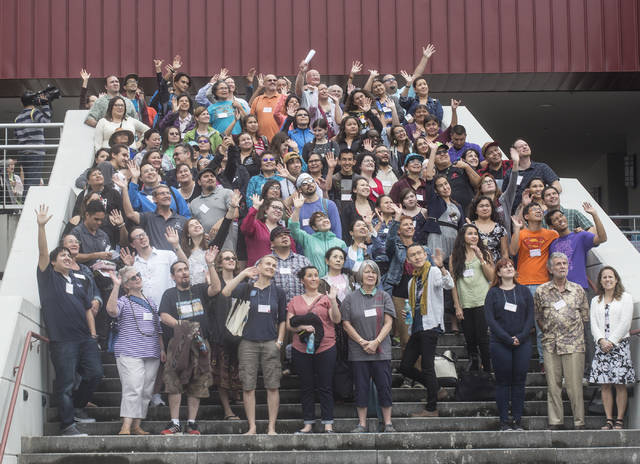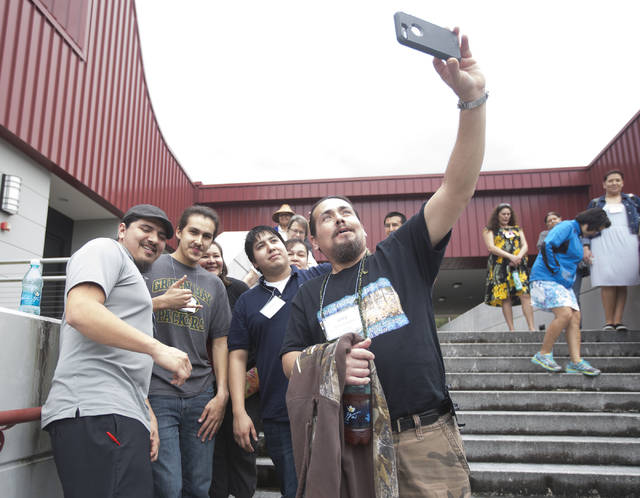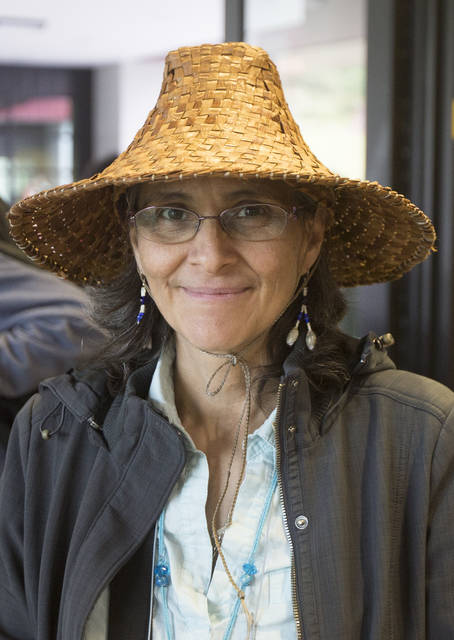HILO — A University of Hawaii at Hilo professor says he wants a full UH college curriculum taught in Hawaiian.
About 3,000 students are in preschool through high school Hawaiian-language immersion programs at 21 sites statewide, said Larry Kimura, associate professor of Hawaiian Language and Language Studies.
“We’re trying to convince our state — the University of Hawaii is part of the state — that we need to continue Hawaiian native education at the college level as well,” Kimura said.
Already, there are families raising grandchildren of the first students who entered immersion programs back in 1985.
“These kids that are being born and raised now in Hawaii are the new native speakers,” Kimura said.
They should be able to look forward to college courses in subjects such as math and chemistry taught in Hawaiian, he said.
That, he said, will complete the process that needs to occur to make Hawaiian, one of two official languages of the state, fully integrated into everyday life once again.
Kimura spoke to journalists Wednesday during the He Olelo Ola Hilo Field Study, a two-day gathering of people from around the globe who are trying to save indigenous languages — and save the information passed down, through language, generation to generation.
A critical mass has been reached to help Hawaiian, once banned from being spoken in the school system, to prosper and regain widespread use, he said. All that’s needed is college-level courses to let speakers of Hawaiian go from preschool to adulthood immersed in their native language.
Attendees of the field study sought to learn how to make school language immersion successful.
They came to Hilo Monday and Tuesday and visited Hawaiian-language immersion classes to get ideas about how they might incorporate what is being done successfully on the Big Island into their own schools. Participants came from Australia, New Zealand, Canada and mainland U.S. states like Arizona, Minnesota, New Mexico, Alaska and California.
They learned how to deal with “new concepts — in a language that has been sleeping for quite a while.” For example, how are topics like apps and web games and solar panels infused into a centuries-old language?
“It’s not only about traditional things,” Kimura said. “The hardest thing is understanding how our traditions and laws are going to transition into today.”
Field study participants spoke during a luncheon Wednesday and shared their appreciation for what they saw.
“It really shows that when a dedicated small group of people comes together for the language with purpose, great things are possible — and great things are happening,” said Victoria Wells of the Nuuchaknulth Nation.
The Nuuchaknulth are indigenous people from the Canadian Pacific Coast.
Three Nuuchaknulth member nations were represented at the field study, including the indigenous Ehattesaht Tribe, the Ahousaht Tribe and the Tla-oqui-aht, she said.
They live remotely on the west coast of Vancouver Island.
Another attendee, Doris Robinson, said, “the village where we come from, Ahousaht, we’re in a very-isolated village. We can only get there by boat.”
Seeing fewer elders alive there, who speak their native language, is worrisome, Robinson said.
“We would like to see a full-immersion class, especially with the little ones. They take in so much when they’re young,” she said. She’s hopeful an elder who speaks the native language can become part of the classroom daily. Currently, one visits occasionally.
Linguist Masahiro Yamada came to the field study two years ago and invited Hiroki Osako from Japan to attend this year.
Osako is a primary-school principal and wants his school to get involved in revitalization of a form of Japanese that was banned in the schools in Japan during the 1950s, similar to the way Hawaiian was once banned. The Hilo field study experience helped.
“What people are doing here greatly encouraged him,” Yamada said, translating for Osako.
Many of the attendees Wednesday planned to fly to UH-Manoa for the fifth International Conference on Language Documentation and Conservation, which continues through Sunday.
Email Jeff Hansel at jhansel@hawaiitribune-herald.com.








